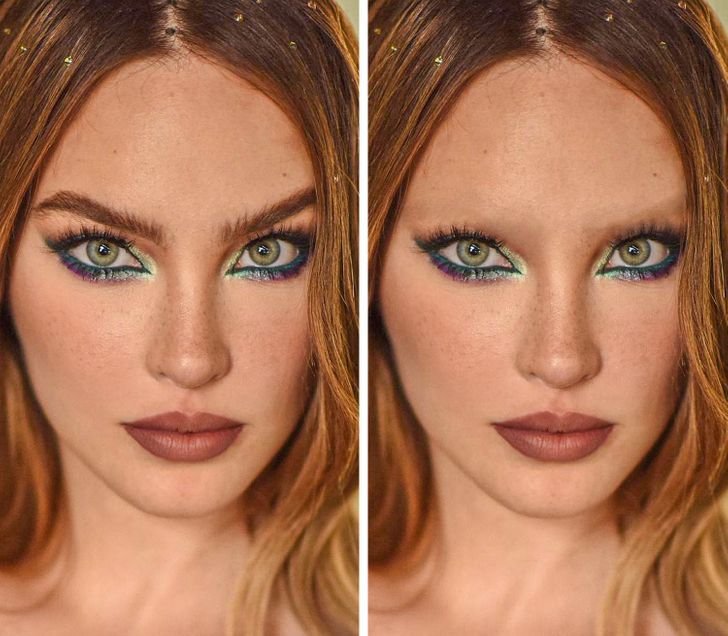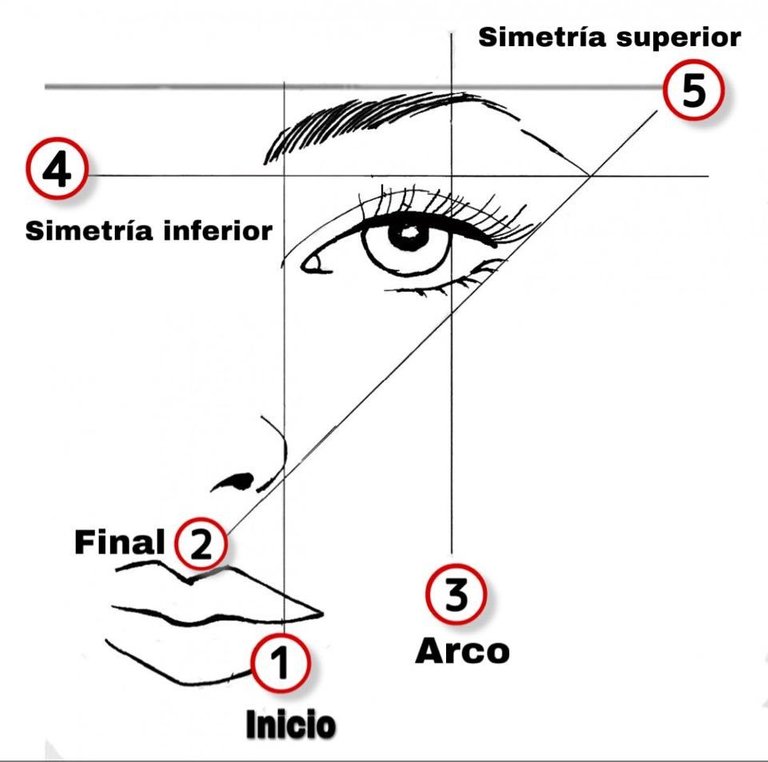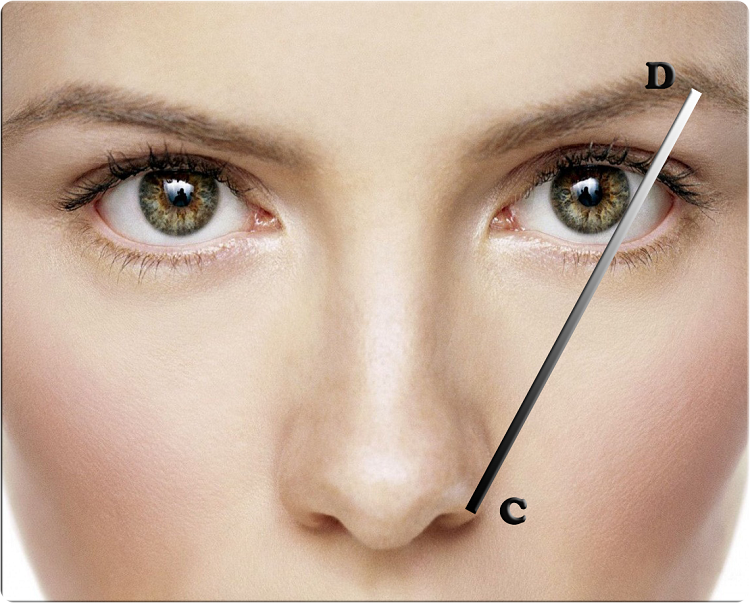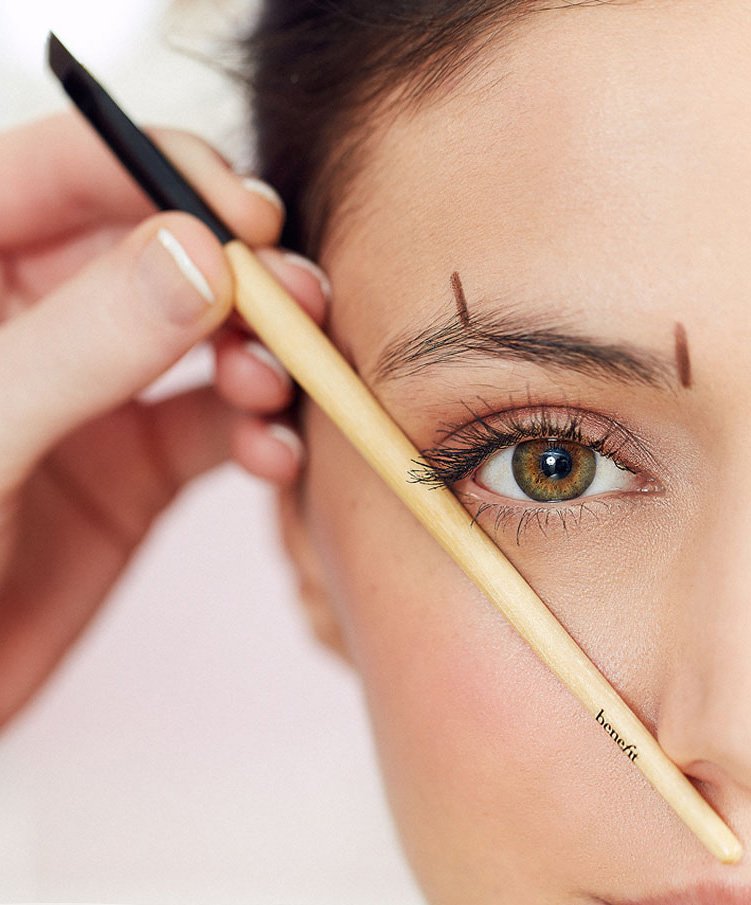Mirar es una de las formas más íntimas de contacto: refleja cómo nos sentimos y también nos permite interpretar lo que están sintiendo los demás.
Por ello, toma una gran importancia en la comunicación de las emociones y en la estética, ya que, por lo general, una mirada alegre o profunda resultará más atractiva que una mirada triste o curiosa.
Looking is one of the most intimate forms of contact: it reflects how we feel and also allows us to interpret what others are feeling.
For this reason, it takes on great importance in the communication of emotions and in aesthetics, since, in general, a happy or deep look will be more attractive than a sad or curious look.
 Fuente / Source
Fuente / Source
Las cejas son el marco de la mirada y, aunque no existe una ceja perfecta que se adapte a todos, sí existen herramientas y métodos para diseñar la ceja ideal para cada individuo.
El visagismo es el estudio de todos los aspectos y elementos que conforman el rostro; y resulta indispensable, cuando se pretende crear armonía estética, ya que nos permite valorar y compensar asimetrías, para adaptar la imagen a modas y tendencias del momento.
Eyebrows are the frame of the gaze and, although there is no perfect eyebrow that fits everyone, there are tools and methods to design the ideal eyebrow for each individual.
Visagism is the study of all the aspects and elements that make up the face; and it is essential when we want to create aesthetic harmony, as it allows us to value and compensate asymmetries, to adapt the image to fashions and trends of the moment.


Fuente / Source
En este sentido, el visagismo de cejas, nos permite conocer las dimensiones (ancho, grosor y curvatura) que deberían tener las cejas, según las facciones y morfología de cada rostro.
A pesar de que se han descrito más de 9 tipos de rostro (rectangular, redondo, triangulo, corazón, entre otros…), en la actualidad, para el diseño de cejas, es útil dividirlos en solo 2 tipos, según la dimensión que predomine: largos o anchos.
De esta manera, en un rostro largo, lo más recomendable es diseñar una ceja con poca curvatura; es decir, en forma plana u horizontal, pues visualmente acorta el rostro; también es preferible que sean más gruesas cerca de la nariz y más finas al final.
Por otro lado, en un rostro ancho, el objetivo es alargar el rostro, por lo que se debe dar forma arqueada a las cejas, haciendo que la parte del medio refleje un triangulo; además, es preferible que el grosor sea el mismo desde el inicio hasta el arco de la ceja.
In this sense, eyebrow visagism allows us to know the dimensions (width, thickness and curvature) that the eyebrows should have, according to the features and morphology of each face.Although more than 9 types of face have been described (rectangular, round, triangle, heart, among others...), nowadays, for eyebrow design, it is useful to divide them into only 2 types, according to the predominant dimension: long or wide.Thus, in a long face, the most advisable is to design an eyebrow with little curvature; that is, flat or horizontal, because it visually shortens the face; it is also preferable that they are thicker near the nose and thinner at the end.
On the other hand, in a wide face, the objective is to lengthen the face, so the eyebrows should be arched, making the middle part reflect a triangle; in addition, it is preferable that the thickness be the same from the beginning to the arch of the eyebrow.
 Fuente / Source
Fuente / Source
Una de las cosas más importantes a la hora de diseñar una ceja, es conocer su distribución y adaptar ese conocimiento para compensar las carencias, que pueden ser: falta de inicio, falta de altura, finales muy cortos o muy largos, ausencia de vellos en áreas superiores o inferiores, alopecia, cicatrices…
One of the most important things when designing an eyebrow, is to know its distribution and adapt this knowledge to compensate for any shortcomings, which may be: lack of start, lack of height, very short or very long ends, absence of hairs in upper or lower areas, alopecia, scars...

Dimensiones: inicios, alturas y finales.
Dimensions: beginnings, heights and ends.
 Fuente / Source
Fuente / Source
1-Los inicios determinan la separación de nuestras cejas. Para saber dónde situar el inicio en el diseño de ceja, calculamos desde la mitad de la aleta de la nariz, en línea recta.
Excepción a la regla: unos ojos demasiado juntos o pequeños, se compensan con unas cejas un poco más separadas; por otro lado, cuando una nariz es ancha, conviene unas cejas más juntas.
1-The beginnings determine the separation of our eyebrows. To know where to place the beginning of the eyebrow design, we calculate from the middle of the nose flap, in a straight line.
Exceptions to the rule: eyes that are too close together or too small are compensated by slightly wider eyebrows; on the other hand, when the nose is wide, eyebrows should be closer together.

Fuente / Source
Recomendación: no resulta muy favorecedor dejar mucho espacio en el entrecejo. Para saber el máximo de separación, tomamos la medida del borde externo de la aleta; para el mínimo, el borde interno.
Recommendation: it is not very flattering to leave too much space between the eyebrows. To know the maximum gap, we take the measurement of the outer edge of the flap; for the minimum, the inner edge.
2-Las alturas determinan el arco de la ceja, nos ayudan a compensar las proporciones del ovalo facial y marcan expresividad. De esta manera, una ceja con altura pronunciada nos ayuda a alargar el rostro y transmite vitalidad; por otro lado, una ceja con arco suave, nos permite simular más anchura y dar más profundidad a la mirada.
2-The heights determine the arch of the eyebrow, help us to compensate the proportions of the facial oval and mark expressiveness. Thus, an eyebrow with a pronounced height helps us to lengthen the face and transmits vitality; on the other hand, an eyebrow with a soft arch allows us to simulate more width and give more depth to the look.
Para situar el punto más alto a la hora de diseñar una ceja, medimos desde el pliegue de la nariz, pasando por detrás de la pupila.
To locate the highest point when designing an eyebrow, we measure from the crease of the nose, passing behind the pupil.


Fuente / Source
Es importante determinar una altura correcta, ya que una ceja demasiado arqueada, puede dar la expresión de estar molestos o asustados; y una ceja demasiado plana nos puede hacer parecer tristes o serios.
It is important to determine a correct height, since an eyebrow that is too arched can give the expression of being annoyed or scared; and an eyebrow that is too flat can make us look sad or serious.


Fuente / Source
3-Los finales o colas influyen en nuestra imagen de perfil, además nos ayudan a definir nuestros pómulos. Una cola demasiado baja, da la apariencia de agotamiento en el rostro. Para calcular la altura debemos trazar una línea, desde el arco de cupido, pasando por el pliegue inferior, finalizando en la comisura externa del ojo.
3-The ends or tails influence our profile image, they also help us to define our cheekbones. A tail too low, gives the appearance of exhaustion in the face. To calculate the height we must draw a line from the cupid's bow, passing through the lower crease, ending at the outer corner of the eye.

Tamaño de las cejas: en promedio, las cejas miden de punta a punta entre 5 y 6 cm. Estas medidas se dividen en cuerpo y cola. Como regla general, el cuerpo 1 mide 1 cm más que la cola.
Eyebrow size: On average, eyebrows measure from tip to tip between 5 and 6 cm. These measurements are divided into body and tail. As a rule of thumb, the body 1 is 1 cm longer than the tail.

Grosor de las cejas: dependiendo del tipo de rostro podemos definir el grosor, sin embargo, como rguía, el mínimo deberá ser 0,6 y el máximo 1 cm. Excepción a la regla: si la ceja es naturalmente más gruesa solo se trabaja el cuerpo y cola.
Eyebrow thickness: depending on the type of face we can define the thickness, however, as a guideline, the minimum should be 0.6 and the maximum 1 cm. Exception to the rule: if the eyebrow is naturally thicker, only the body and tail are worked on.

Tomando en cuenta este protocolo, podrás diseñar unas cejas que favorezcan a tu rostro. Gracias por leer.
By taking this protocol into account, you will be able to design eyebrows that flatter your face. Thank you for reading.














Didáctico y muy completo. Buena publicación, gracias por compartir.
¡Excelente trabajo!
Con miras a optar a recibir el voto de algunas comunidades de curación, es importante que cuando utilices imágenes, coloques la fuente, es decir, un enlace al sitio web donde está la imagen originalmente. No a una búsqueda en Google u otro buscador, ni a la imagen en sí, sino a la página que la contiene. En este enlace puedes encontrar la explicación más detallada.
¡Te deseo muchos éxitos!